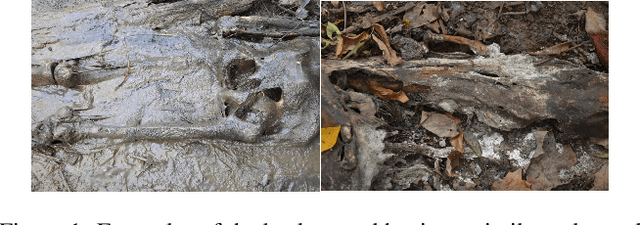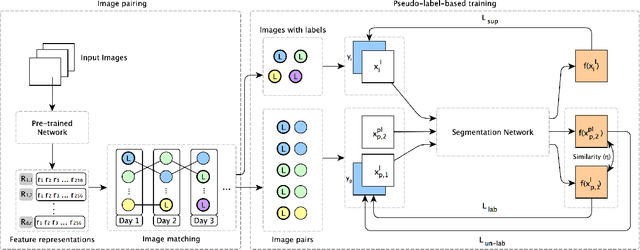SLRNet: Semi-Supervised Semantic Segmentation Via Label Reuse for Human Decomposition Images
Paper and Code
Feb 24, 2022



Semantic segmentation is a challenging computer vision task demanding a significant amount of pixel-level annotated data. Producing such data is a time-consuming and costly process, especially for domains with a scarcity of experts, such as medicine or forensic anthropology. While numerous semi-supervised approaches have been developed to make the most from the limited labeled data and ample amount of unlabeled data, domain-specific real-world datasets often have characteristics that both reduce the effectiveness of off-the-shelf state-of-the-art methods and also provide opportunities to create new methods that exploit these characteristics. We propose and evaluate a semi-supervised method that reuses available labels for unlabeled images of a dataset by exploiting existing similarities, while dynamically weighting the impact of these reused labels in the training process. We evaluate our method on a large dataset of human decomposition images and find that our method, while conceptually simple, outperforms state-of-the-art consistency and pseudo-labeling-based methods for the segmentation of this dataset. This paper includes graphic content of human decomposition.
 Add to Chrome
Add to Chrome Add to Firefox
Add to Firefox Add to Edge
Add to Edge